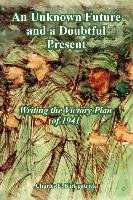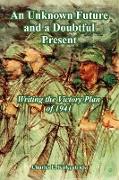- Start
- An Unknown Future and a Doubtful Present
An Unknown Future and a Doubtful Present
Angebote / Angebote:
A striking feature of World War II was America's ability to raise and equip a modern army seemingly overnight. Emerging from its negligible base in 1941 and competing with the needs of the other services and Allies, the Army stood in just forty-eight months at 8 million men with equipment second to none. Such a prodigious feat owes much to sound military planning, as The Victory Plan of 1941 carefully demonstrates. But this study also underscores the fact that even in 1941 warfare had become so vast in scope, so expensive, and so technologically complex that nations could never again afford to maintain in time of peace the armies needed in time of war. As Albert Wedemeyer, the remarkable Army officer who wrote the 1941 plan, makes clear, mobilization transcends purely military matters and must be understood to embrace the total capacity of nations. The conclusion seems inescapable: the United States Army must keep mobilization planning at the center of all its military planning. The experience of the nation's total mobilization for World War II offers good counsel, not so much in its details of numbers and types of units raised or materiel required as in its description of the thought process Wedemeyer and his colleagues used in reaching these decisions. I recommend the following analysis of Wedemeyer's vital work to military planners and to all those studying mobilization and logistics. It will provide a clear picture of how our recent predecessors approached the complex challenge of preparing for modern war, a challenge that remains with us today.Harold W. NelsonColonel, USAChief of Military History
Folgt in ca. 10 Arbeitstagen





